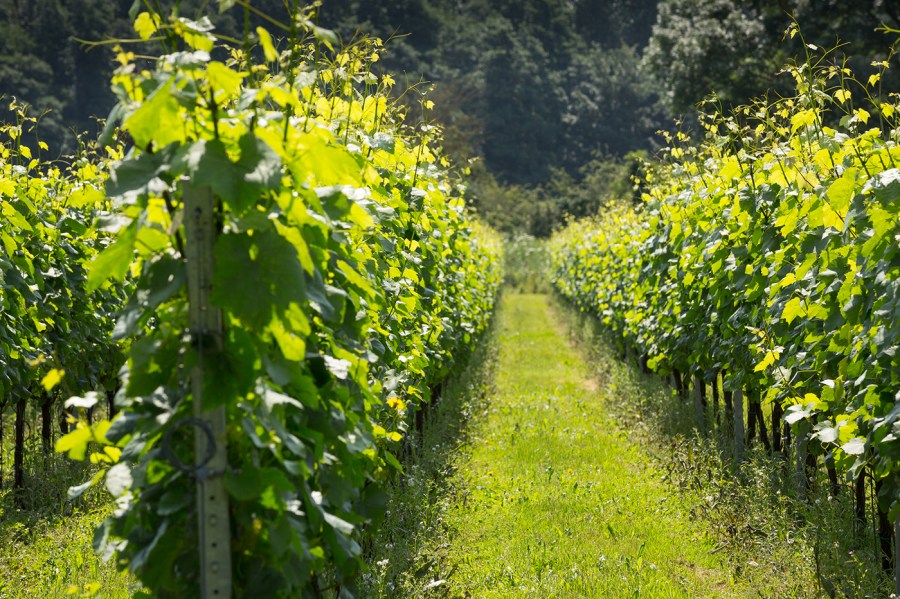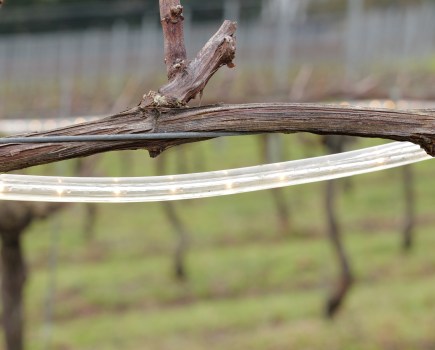Of all the decisions that have to be taken in order to plant a vineyard, finding the right site for your enterprise is undoubtedly the hardest, the most expensive and the one that can never be changed. Oh and I forgot to mention, the one that probably has more influence on deciding the quality and quantity of the wine being produced than any other. And as other countries have shown, exact location makes a lot of difference.
Great Britain of course has not been growing vines for that long, a bare 80 years since the first vines of the modern era were planted at Hambledon, and only 50 years since people seriously started planting Chardonnay, Meunier and Pinot noir. Today, these three varieties account for a shade under 70% of all English and Welsh vineyards.
We are in essence a very young industry. Our experience therefore of how different varieties perform on different sites and soils, in terms of both quality and quantity, is necessarily limited. In many cases it is based upon anecdotal evidence and not backed up by reliable data on yields, grape quality, wine quality or wine price, the four elements that together allow one to gauge the suitability of a particular block of land. Therefore our starting point of saying this land is worth so much and that land is worth less (or more) is one of relative ignorance. However, not total ignorance, and there are definite trends appearing which show where growers believe the best place is to plant vineyards for good English wines.
Where to buy
The question of where to plant vineyards is full of inconsistencies. With over 1,100 individual vineyards in Great Britain, and with 1,100 different owners making decisions about where they want to live, work, and run a business, there is always going to be good reasons why you fancy Cornwall rather than Essex, or Kent rather than Gloucestershire. However, what the numbers show is a definite trend for the bigger and what one might call the more ‘commercial’ growers (although anyone that sells wine is in my book commercial), to be located towards the south east of the country. Of the 4,250-ha (10,502-acres) currently on my database for the whole of GB, 2,417-ha (5,972-acres) or 57% is in the south east, with Kent having 1,293-ha (3,195-acres) of vineyards, West Sussex next with 557-ha (1,376-acres) and East Sussex following with 429-ha (1,060-acres). For those who have vineyards in this part of the country, the reasons are obvious.
The Garden of England has been growing fruit since Roman times and its dry, chalky North Downs slopes provide free-draining, sheltered and largely frost-free sites for both good still and sparkling wines. The region is also close to the major market of London, and with good (and improving) access, is ideal for wine tourism, something Kent County Council is eager to support and promote. Kent is also the home to several of the country’s major producers: Balfour, Chapel Down, Evremond, Gusbourne, MDCV, Simpsons, Squerryes, Yotes Court and a new 40-ha (100-acres) sparkling wine vineyard at Old Wives Lees, near Canterbury. Nyetimber, whilst West Sussex based, also have 187-ha (463-acres) out of their 424-ha (1,048-acres) in Kent. This gives the county and the south east in general a critical mass that other regions cannot match. Taken together I estimate there is close to 1,000-ha (2,500-acres) planted on the North Downs chalk.
The other ‘dry’ county in the south east is Essex, whose vineyards and wines used to be a bit overlooked, but today, with Danbury Wine Estates leading the way with their still wines, and the purchase by Jackson Family Wines of a block of land to plant, the county seems to be taking off viticulturally speaking and will surely expand. However, the county is currently still small, and only has 404-ha (998-acres) of vineyards, around 9.5% of the GB total.
Of course, the south east is certainly not the only place to grow grapes and make wine in GB, but the further west you go, the more difficult it gets. Research shows that crops are smaller, and more variable, and gold medals less awarded than in the more easterly regions. But of course there any many other factors that determine whereabouts a vineyard is based. Wine tourism is most definitely on the increase and with the west country a very popular place for tourists and second-home owners, the pleasures of buying local and selling direct without a middle-man taking half the margin might well make up for any shortfalls in performance.
How to buy
Of course, knowing what you want and finding it, let alone finding that it’s for sale, is another matter and for this reason alone, it’s no good just looking in estate agent’s windows, trawling their websites, or even subscribing to more specialised property-finder type websites in the hope that something comes up.
Many buyers, especially those looking for larger sites where the land is the most important factor, and the accommodation is of less (or even no) importance, are best advised to approach a land agent who is involved with farmers, growers and estate owners in the area they are searching in and see if they can help find a suitable site. Land agents, apart from buying and selling land, are involved with their clients in many different ways. There are rents and leases to advise on and draw up; there are negotiations between landlords and tenants to facilitate so that both parties are happy; there are annual valuations of growing crops to undertake; and there is the business of inheritance planning which every farmer has to face sooner or later.
In short, land agents get to know far more about their clients and their businesses than a regular estate agent just selling houses. This knowledge enables them to identify farmers who might be open to selling a relatively small piece of land if the price is right. Of course, this type of expertise is not free and a property-finder service from a reputable land agent can cost anywhere between 2% and 3.5% of the purchase price, depending on the complexity of the search and the eventual deal. However, the difference between paying say £37,000 per hectare (£15,000-acre) and not finding what you want and say £38,000-ha (£15,500-acre) and finding exactly what you want is huge. National land agents such as Knight Frank, Savills and Strutt & Parker, plus more south east based ones such as BTF Partnership near Canterbury, and CLM in East Sussex all have significant experience in vineyards.
Land prices
Ten years ago in 2014, when I wrote and published the first edition of Wine Growing in Great Britain, the price for ‘bare’ arable land i.e. no buildings or accommodation, in the south-east was around £20,000-ha (£8,000-acre). Higher prices for vineyard land had been paid – in 2009 Nyetimber paid £40,000-ha (£16,000-acre) for 30-ha of prime chalk land near Stockbridge, but whilst this particular deal didn’t seem to shift the price dial at the time, it must have had an almost subconscious influence on land agents, as within a few years, prices started to rise.
By 2012-14, when several new vineyards were established in Kent, the ‘going rate’ for south-facing chalk land had crept up and people were starting to talk about £25,000-ha to £36,000-ha (£10,000-acre to £14,500-acre) as the ‘going rate’ for really good vineyard land. Today, one hesitates to predict what the price of a really good vineyard site might be. In the south east, there is certainly vineyard land that has been sold for double those prices and one imagines that it could still go higher. Jackson Family Wines, the latest overseas wine company to invest in Britain when they bought 26-ha (64-acres) of land in the Crouch Valley, in south Essex, are rumoured to have paid a sum per acre that I dare not print for fear of looking a fool. If true, then it certainly marks this area out as a place where people really want to grow grapes which will put a smile on the faces of the owners of the 250-ha (618-acres) of vineyards already planted there. Of course, prices for vineyards where Jacksons own their other 5,666-ha (14,000-acres) of vineyards will in many instances be many times higher than their Essex purchase. In California, where they own twenty-eight of their forty wineries, prices will probably be many times higher.
Already planted vineyards of course are priced to consider several factors. The costs of planting and establishment must be taken into account and to get a vineyard into full cropping, say by year four, the costs will be around £50,000-ha (£20,000-acre). The quality of the site is also a very important factor in pricing existing vineyards. What’s the site like? South-facing, free-draining, no higher than 100m above sea level and well planted with good trellising? Has it been well looked after, especially with regard to the pruning and training? And what are the varieties and how’s the quality of the fruit and wine that’s been coming off the site? If all these boxes are positive, then taken together with the land value, you might be looking at a price of at least £120,000-ha (£48,500-acre) for something really attractive.
Whilst this might sound impossibly high, one needs to remember that a hectare of planted land in the best part of Champagne will be at least €1.5 million per hectare (£530,000-acre) and possibly as much as €2 million per hectare. That makes GB vineyards in the best spots look almost cheap!




